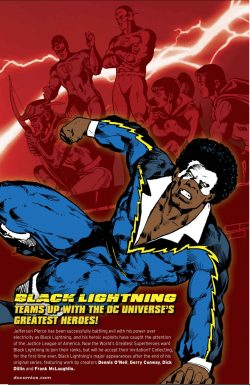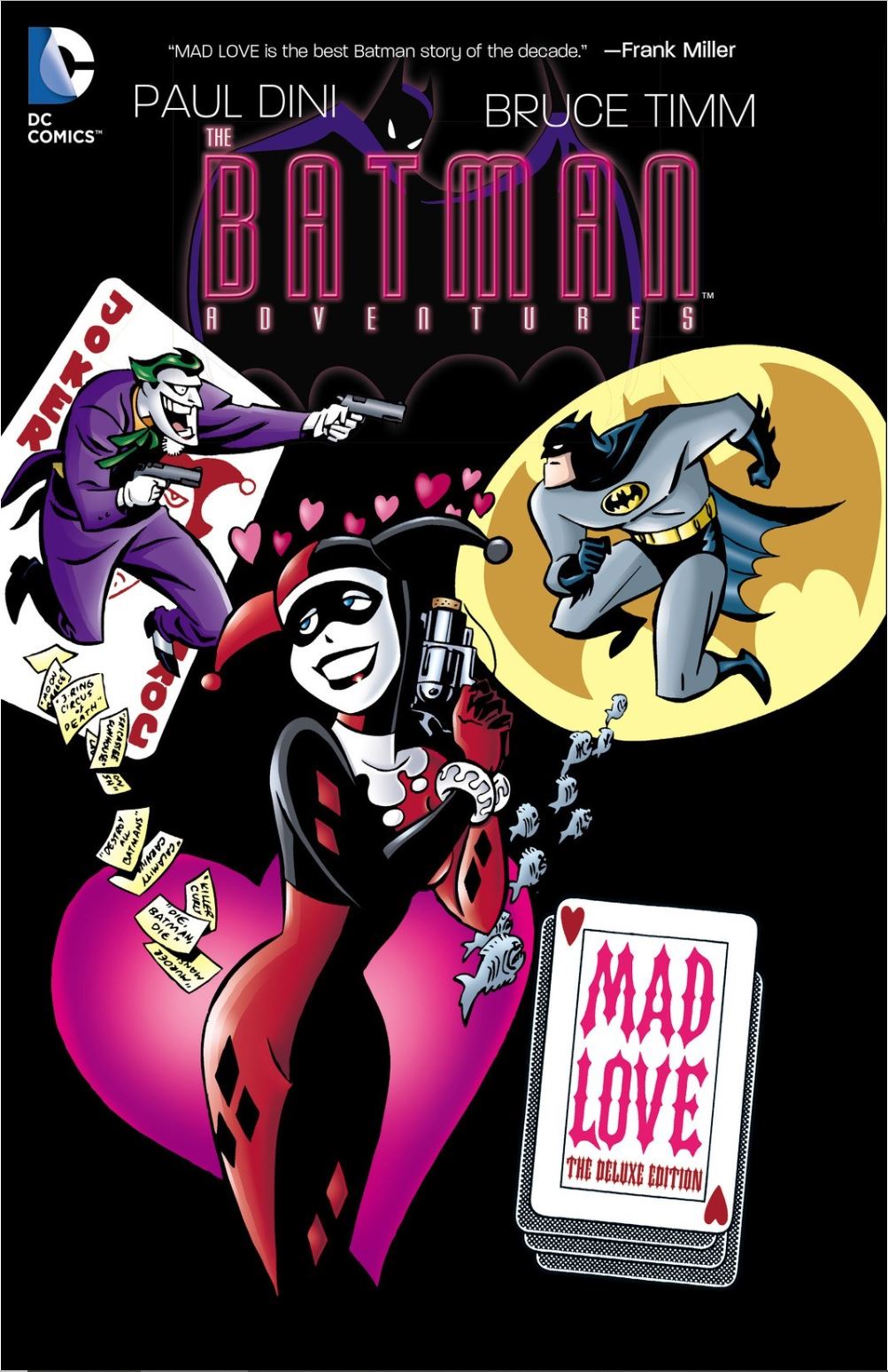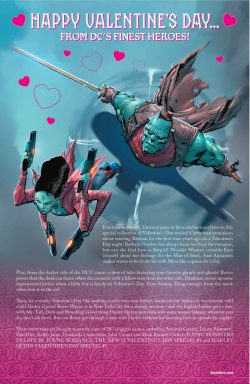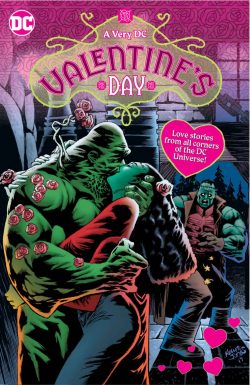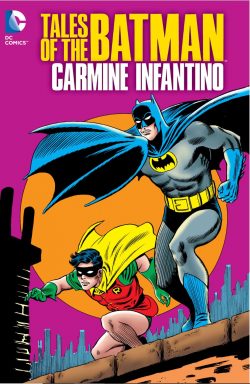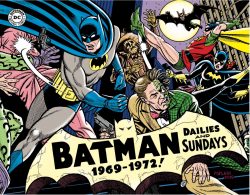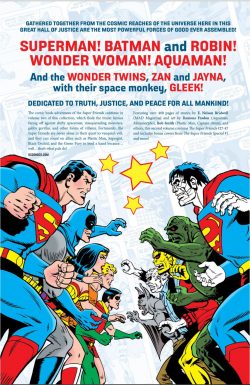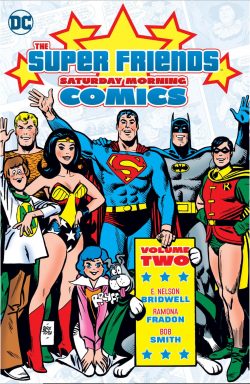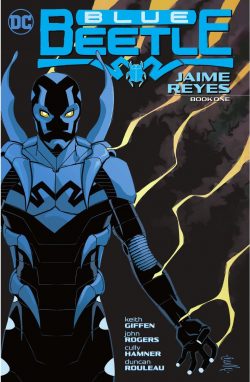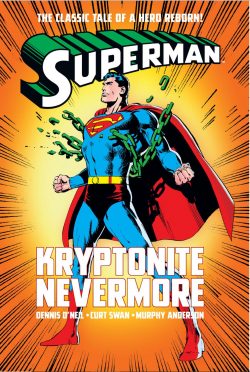
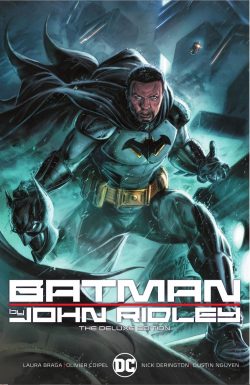
By John Ridley, Laura Braga, Olivier Coipel, Nick Derington, Dustin Nguyen & various (DC Comics)
ISBN: 978-1779511263 (HB/Digital)
Like his immediate progenitor Superman, the Dark Knight has transcended lowly populist origins to join a metafictional literary landscape populated by the likes of Tarzan, Romeo and Juliet and Sherlock Holmes, as well as similar graphic upstarts including Mickey Mouse and Popeye. As such, his universal recognition factor outside our industry means he gets to work in places and scenarios that don’t always appeal to traditional funnybook audiences.
That means everyone thinks they know Batman and has their own story to tell about him…
It’s a propensity of the property that DC has always been willing to push to that fact. Probing the many, many worlds of Batman has always paid off for the publishers (and games-makers/movie and TV producers/toy vendors, et al) who have all in their own ways expanded Bob Kane & Bill Finger’s original concept since 1939. Just check out The Dark Knight Returns, Batman Beyond or Gotham By Gaslight to see how he inhabits many worlds and how powerfully successful the process can be…
Of course, the prime culprit and beneficiary of this plasticity will always be the comics makers themselves. Over decades, DC has constantly delivered an infinite variety of Gotham Guardian, in wild new worlds or fanciful locales not so different from mainstream continuity or what we consensually accept as the “real world”…
Following mega-event Dark Nights: Death Metal, all previous aspects of DC comics continuity were reactivated (re-legitimised?) after years of adulteration, alteration and revision. It resulted in a vast, multiversal repository of story potential, with one future-set sector designated the Future State.
An editorial pause, palate-cleanse and fresh jumping-on point, the project delivered stories of apparently-familiar characters and properties in near or distant settings, subdivided into already-proven divisions such as Future State: Wonder Woman, Future State: Justice League and Future State: Gotham…
Meanwhile…
The evolution and assimilation of non-white, non-standard characters – defined and othered by skin colour, religion, ethnicity and who loves whom – into most regions of mass media had been described as “measured progressiveness” by author and screenwriter John Ridley. You might know him from novels like Stray Dogs, The Drift and What Fire Cannot Burn; screen works as varied as Fresh Prince of Bel-Air, Cold Around the Heart, U Turn, Three Kings, Static Shock, Third Watch, Undercover Brother, American Crime or 12 Years a Slave and comics such as The American Way, The Other History of the DC Universe, Superman Red & Blue and Black Panther.
His premise is especially true and effective in comics, where incremental firsts have always been applauded and encouraged – and rightly so, as the industry was traditionally aimed at kids and has always been at the forefront of progressive thinking and action. However, it has also suffered from a tickbox mentality where true change has been slow to materialise and hard to sustain.
We can say “first black superhero”, “first gay hero”, “first interracial marriage” or “first same-sex kiss”, but other than offering a glimmer of acceptance, and recognition, what has really changed?
It’s certainly better than an all-white, all-male milieu where “different” equates to “lesser than”, where more than 50% of the populace – and who knows how much of the readership – doesn’t conform to supposed “norms” and are so often reduced to eye-candy, or plot props, and relegated to useless bystanders, victims or bodycount fodder, but so seldom even competent villains, who at least have some agency…
For the longest time those attitudes were tacitly enshrined on funnybook pages – and not even for sinister reasons – but what appears to simply be an unconscious acceptance of an unchallenged status quo…
Nevertheless, incremental progress did happen – in comics at least – and after assorted dalliances with Dark Knights of color, in 2020 Future State: The Next Batman picked up mainstream Bat-lore, gave it a shake and twist and sparked an ongoing divergent scenario where black characters inherited the whole spotlight to further the legend…
Originally released as Future State: The Next Batman #1-4, the experiment became as self-sustaining as comics can get. This deluxe edition gathers that initial storyline, augmented by follow-up material from Batman Black & White #3, Batman: The Joker War Zone #1. There’s also a new story…
It begins a few years from now. Bruce Wayne is dead, his armourer/advisor Lucius Fox has inherited all his money and sits precariously at the top end of a stratified and dystopian city. The beleaguered GCPD are reluctantly and unwillingly bolstered by the Mayor’s private security forces. The Magistrate is a paramilitary force of “Peacekeepers” with only one job: killing on sight anybody wearing a mask…
Directly answerable to Mayor Nakano, the hunters are absolutely no help against escaped inmates of Arkham or the usual criminals infesting the city: expending their energies in pursuit of an apparent resurrected legend and inflicting immeasurable collateral carnage. Despite all this, the night still belongs to a punishingly combative “Bat”, who saves who he can despite the forces aligned against him…
The Fox family have recently reunited, with patriarch Lucius (CEO of Wayne Enterprises and now the most powerful employer in the city) struggling to adapt as his wife Tanya uses all her legal acumen to back and legitimise the Mayor’s stance on vigilantes. She cannot get past the injuries her eldest daughter Tam suffered at the hands of Gotham’s bad people: a situation echoed in son Luke (former superhero Batwing) and youngest daughter Tiffany.
Especially adding to the tension, prodigal son Tim has recently returned from a life no one knows of. He has changed very much and even abandoned his own name: only answering to “Jace” now. No one really knows yet if he’s welcome, or what he really wants…
Written by Ridley and illustrated by Nick Derington and Laura Braga, with colours from Tamra Bonvillain & Arif Prianto, the saga follows a new Dark Knight as he spectacularly battles street-gang proliferation, rapists, outraged vengeance-takers, child-killers, run-of-the-mill murderers and ruthlessly ungovernable law-enforcers.
In his wake, ordinary cops like Renee Montoya and Adriana Chubb struggle to square the circle of duty vs orders vs the apparently obsolete concept of justice in a Gotham so far beyond what qualifies as a “Police State” that it’s impossible to know who to trust …unless it’s an outlaw in a mask…
Morally ambiguous and emotionally complex, but with a strong element of human heart at its core, the saga of a fresh force for Reason and Right in a very nasty place caught on: spawning an extended epic (we’ll get to Future State: The Next Joker, Gotham, Second Son, I Am Batman and the rest in the fullness of time) to score the big prize – an alternate incarnation able to stand on its own spiky, combat-booted feet…
That success is confirmed here by a selection of short pieces beginning with wry romp ‘The Cavalry’ as Ridley and illustrator Olivier Coipel see the new guy survive a bad situation thanks to the late arrival of a masked teen assistant in the grand manner, as seen in Batman Black & White #3.
Never pausing until it’s over, Coipel & Matt Hollingsworth & Bennett unpick ‘Family Ties’: painfully probing the trigger event that changed Lucius Fox after he was tortured by psychopathic sidekick Punchline and rescued by Batwing in Batman: The Joker War Zone #1, before a Coipel pin-up from Detective Comics #1027 (November 2020) escorts us to a new “old” vignette.
Set years ago when Robin was a white boy just starting out – and courtesy of Ridley, Dustin Nguyen, John Kalisz & letterer Tom Napolitano – ‘3 Minutes’ details a moment of scary clarity and responsibility accepted when Lucius Fox first helps Alfred Pennyworth save a hero…
With covers by Doug Braithwaite, Ladronn, Coipel, Tomeo Morey and Ben Oliver, Batman by John Ridley offers thrills, chills, challenges, revelations and all the surprises you’d expect from a tale of the Dark Knight: any and all of them…
© 2020, 2021 DC Comics, All Rights Reserved.

